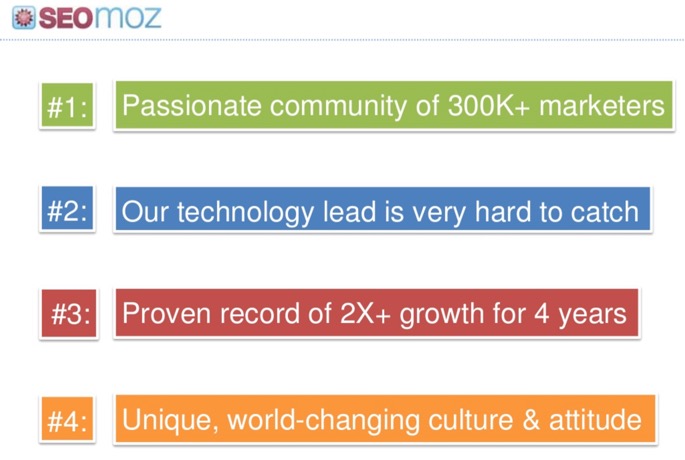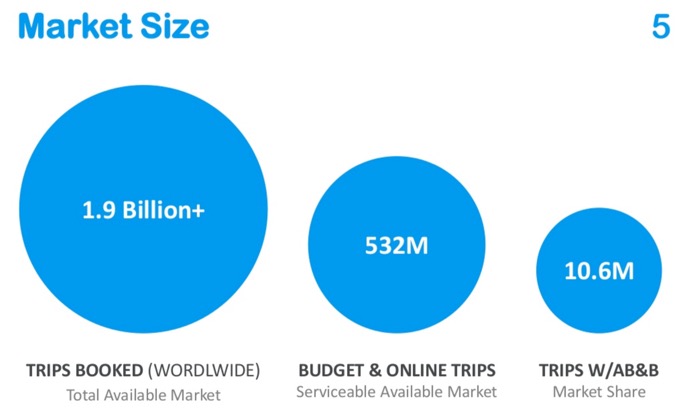Pitching your startup: Lessons learned
This article was originally published on the Startup Resources blog.

How to pitch
I was recently asked to give a talk on how to pitch a startup, and I figured since I’m building a deck and gathering resources for the talk, why not write it up as a blog post. You’ll find the presentation near the bottom of the post.
I’m far from the biggest pitching expert in the world, but I’ve pitched CrankWheel on stage at multiple conferences around the world, I’ve won pitching competitions a couple of times, I’ve pitched to many investors, and I’ve mentored a lot of startups, so I’ve seen my share of both good and bad pitches.
Why pitch?
You pitch for multiple reasons, all of them in the end having to do with promoting your startup. These include:
- Attracting investors
- Selling to customers
- Finding partners
- Hiring people
- Trying to win a pitch competition
In this blog post, we’ll focus on pitching in general, i.e. the art of promoting your startup through an in-person presentation, and on the type of material you would include in a pitch deck if you are pitching to attract investors.
Decks to send vs. decks to present
There are two broad categories of pitch deck for startups seeking investment:
- The one that is only intended to be shown with you presenting the pitch live.
- The one that you can email an investor and leave with them. This is what an investor wants when they ask you to email them a pitch deck. It needs to have a lot more details and typically more slides than the first type.
We’ll focus on the first type, the one you deliver in person, but there are many links to resources on pitch decks you can email in the resources section.
Pitch basics
Make your deck look nice
Your slides should look nice. Get a designer to help you, or buy a PowerPoint template you can customize – for example, the templates for my slides (shown below) were purchased at GraphicRiver. I also found a good-looking template that is specialized for pitch decks (they also have a nice infographic about how to pitch ). You can also find lots of free PowerPoint and Keynote templates online.
Listen to Guy Kawasaki
Follow Guy Kawasaki’s 10/20/30 advice: No more than 10 slides that should take no more than 20 minutes to deliver, and no font should be smaller than 30 points. That last bit prevents you from having slides that are too text-rich.
Practice until perfect
Practice your pitch until you can deliver it without reading from any notes, and with maximum emotional impact.
I am dead serious about this. When people get up on stage and the pressure builds and they want to deliver their pitch but haven’t practised enough, I’ve seen very bad things happen.
Ideally, you should be able to give a perfect rendition of your pitch while a friend stands in front of you, screaming insults, jokes and math quizzes in your face.
Personally, I spend hours perfecting my delivery, and even for a pitch I’ve delivered a few times before, I still need a couple of hours to refresh my memory so I can deliver it just right.
Emotional hooks
My number one piece of advice is that you need to find a way to have your audience connect emotionally to what you’re telling them.

Basic: Ask about experiences in the past
The simplest thing is to ask them a question that reminds them of a painful or joyful experience related to the problem you’re trying to solve. For example if you’re improving pizza delivery you might ask the audience “when was the last time your pizza arrived cold”?
If it’s something they may not have directly experienced, you can do the same through somebody they care deeply about. For example, if you have a solution to make computer games even more engaging, you could ask them “have you ever seen your kids so deeply engrossed in a computer game you couldn’t talk to them?”
Advanced: Directly give them an experience
Even better is if you can directly give them an experience during your pitch that lets them connect on an emotional level then and there. I’ll give you a couple of examples from some of my own pitches of CrankWheel:
- I gave a pitch where I was highlighting the fact that being able to quickly show things visually can really help you communicate better over the phone. To give them the emotional connection, early on in the pitch I asked the audience to close their eyes. I then proceeded to try to describe the clothes I was wearing. About 10 seconds in, I asked them to open their eyes, and to notice that now that they can actually see what I’m wearing, it both takes much less time than listening to me describe it, and they have a much more correct understanding. Here is a video of that pitch.
- Another pitch I did was to illustrate the importance of being able to get software demos instantly, instead of waiting for days. At the start of this pitch, I told the audience “I know you’re ready and interested in hearing my pitch”, and asked them if they’d like to go ahead. When they said yes, I told them “OK, just fill in this simple form (while showing a form with 15 fields on it), and I’ll get back to you within a couple of days to book a meeting where you can get to hear my pitch.” Right then and there, they’ve experienced how silly and frustrating it is when you visit a website and want to know about some piece of software, to have to request a demo and only get more information days from now. Here is a video of this pitch and here is a more produced version that we actually use on our website.
Parts of a pitch
A typical investor pitch should cover roughly the following areas, often in roughly this order:
- One-liner / elevator pitch
- Team
- Problem
- Solution
- Your (ideally unfair) advantage
- Product (demo or slides showing it)
- Your traction
- Market analysis and go-to-market plan
- Competitive analysis
- Business model
- Investment ask
- Contact details
These definitely don’t all need to be stand-alone slides. For a pitch deck you’re presenting, you’ll not want to drown your audience in details on each slide either.
This is just a rough order you can work with, but you can definitely change it around. For example, if your team doesn’t consist of industry veterans with a proven track record, then you might not want to make that slide number two. Get to your strengths and your “wow factor” as quickly as you can in the deck.
Let’s look at pitch deck slides from some well-known companies as examples of each part of the pitch:
1. The elevator pitch
Your first slide should simply tell people, in a nutshell, what you’re all about. If you can’t come up with one sentence that clearly tells people what you’re doing, like AirBnB did, then make a sentence that tells people roughly in what space you are and makes them intrigued.

This example is an adaptation of AirBnB’s original pitch deck by Slidebean.
2. Team
If your team is strong, you should highlight its strengths early on in the pitch. Here’s an example from Square, which had an extremely strong founding team.

Don’t give too much detail on each person; ideally you want to highlight a couple of really impressive facts, for example if they played a key role in a successful and well-known company or brought in a lot of business as a salesperson.
3. Problem
You need to explain the problem that you’re addressing. What is the pain point or lack of efficiency that you help with? Ideally, customers should NEED a solution to this problem, rather than WANT one. This is sometimes expressed as whether your product is a vitamin (customers want it) or a painkiller (customers need it).

The example is from Mixpanel. They went on in a second slide to say that companies were using inconsistent data from multiple sources without a single source of truth or a good way to analyze things.
4. Solution

Carrying on with Mixpanel as the example, as it flows naturally from the problem. You should describe your solution as simply as possible. You’ll have a separate chance to show off the details if you have a product demo or a few slides on your product.
5. Your (ideally unfair) competitive advantage

What unfair advantage, that your competitors will find hard to beat, do you have as a company or with your product? This can be technology, it can be existing market size, growth rate, and more. You should also illustrate how your solution is better than the existing solutions out there, although sometimes this can belong on the slide where you show the competitive landscape.
6. Product

Here’s where you either do a brief product demo or show a few slides illustrating your product. If possible, your demo should reinforce why your solution is better and the unfair advantages you may have. This is one of Foursquare’s original slides.
7. Traction

If you can, show the traction you are getting on a slide. Buffer’s original deck is pretty ho-hum and not the prettiest, until you get to the traction slide, at which point most people would want to invest. If you don’t have that kind of traction, you can still try to show traction by means of customer testimonials, ROI your customers have seen, or a timeline of company achievements where you can tell that things are speeding up.
8. Market analysis and go-to-market plan
The most typical way to show your market size is to show the TAM (Total Available Market), the SAM (Serviceable Available Market) and your own projected market share. Here’s that slide adapted again from AirBnB’s original deck.

You often also want to show what your go-to-market strategy is: How will you get your product in front of users? What will be the acquisition cost of a new customer, and what will be the lifetime value? How will you achieve the projected acquisition cost? What are your distribution channels? Is there a viral factor and why?
9. Competitive analysis
Another example from AirBnB is one of the nicest ways to illustrate your competitive landscape. Choose a couple of axes where your startup will be up and to the right compared to the competition – in this example, AirBnB is most affordable and the most online transaction-y.

Regardless of what your slide looks like, what you want to show when you talk about the competition is how your startup is positioned to be different and better than the rest.
10. Business model
A lot of articles on pitch decks will tell you to have 3-year financial projections summarized in one slide.
Take my word for it: Unless you’re looking for your Series B or later and already have a significant financial track record, no investor worth their salt would ever believe projections stretching that far out, or showing that level of detail when you’re .
In my opinion the best thing to show on the business model/financials slide is:
- How you make your money, i.e. who pays you and for what. This isn’t always obvious in the case of marketplaces, social networks, educational apps and many other types of business, so it should typically be spelled out.
- That your unit economics are solid: The lifetime value of a user / customer greatly exceeds the typical acquisition cost of a user / customer. You should ideally already have shown in your traction slide that you are able to grow your user/customer base fast.
Here’s how Buffer showed this:

11. The investment “ask”
Your investment slide or “ask” is important to include when you’re pitching to an investor.

Typically you would include how much money you’re looking for, roughly what the terms are (e.g. priced round or a convertible note at X% discount), and how much runway this gives you. Sometimes, when it’s not obvious, you should include how the funds will be allocated, for example if there’s a significant capital outlay or a significant ad spend, rather than the more typical case of almost all of the money going to salaries and contracted services.
12. Contact details
This is one of the original slides from TheFacebook that they used as a press kit. Just goes to show that even though I advise you to make your slide deck look good, in the end of the day it’s the quality of your company that matters.

If you want folks to be able to contact you after your presentation, you’d better include your contact details on one of the slides. If you’re sending out a pitch deck rather than presenting in person, this is doubly important.
The call-to-action
Whenever you’re in front of an audience, always take that opportunity to leave them with a call to action.
If you’re pitching to investors, the call to action should be to ask questions, get in touch, and ultimately invest in your startup.
For a different crowd, try different CTAs. For example, if you’re in front of a large audience at a startup conference during a pitch competition, and your startup is all about a mobile game, you could end with this call to action:
- “Alright everybody, can I ask you for a favor? Take your smartphone out of your pocket.” (wait for most people to do it)
- “Now that it’s out of your pocket, you’re just three clicks away from installing NameOfMyGame. It’s available on the App Store and Google Play, why not install it now?”
My presentation
Here are all the slides from my presentation, unfortunately they don’t quite look right because of a font my slides used that Slideshare doesn’t seem to like. If you click through and view notes you’ll see my speaker notes as well.
All my “how to pitch” slides on Slideshare.
Further resources
Articles on what should be in your pitch deck and how to pitch:
- The Only 10 Slides You Need in Your Pitch by Guy Kawasaki
- The Ultimate Pitch Deck to Raise Money for Startups by Chance Barnett at Forbes
- The 11 Slides You Need to Have in Your Pitch Deck by Noah Parsons at Bplans
- What is a Pitch Deck by Improve Presentations (more of an infographic, but hits a lot of key points)
- How to Pitch a VC by Dave McClure
Example pitch decks from well-known companies:
- 30 Legendary Startup Pitch Decks And What You Can Learn From Them by Aaron Lee
- bestpitchdecks.com
- The Facebook Pitch Deck from 2004 by Slidebean
- Pitch Deck Examples from successful startups by Slidebean
PowerPoint and Keynote templates:
- Improve Presentation’s specialized pitch deck template ($19)
- Lots of PowerPoint and Keynote templates for sale at GraphicRiver
- PowerPoint and Google Slides templates for free at SlidesCarnival
- Lots of free PowerPoint templates at Showeet (just be careful not to click the various misleading “download now” ads)
- Free Keynote templates at Slidesmash (search for the ones with “Free” in the title of the template – the rest don’t seem to be free)